Construction Roles and Responsibilities: Complete Guide to Every Position on a Project
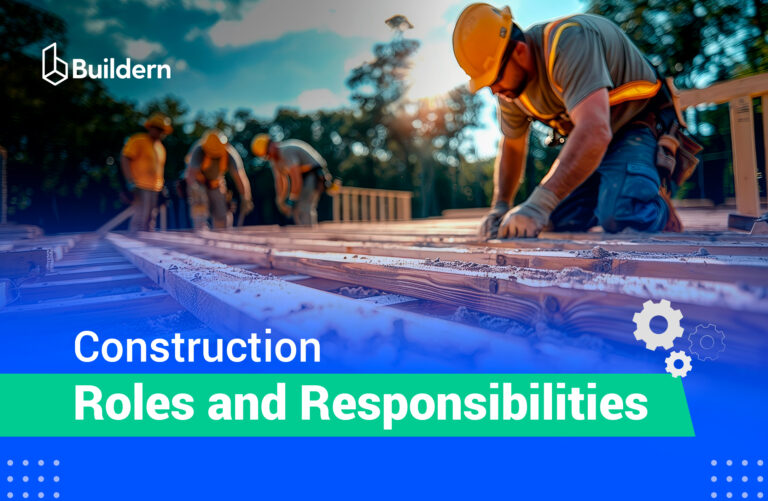
Construction job sites run on teams that include planners, problem-solvers, and crews who know their jobs inside out. On one project, you might see a chief financial officer (CFO) in a trailer signing off on budgets, and a laborer tying rebar just a few steps away. Both matter, and both keep the project progressing.
But I’ve seen what happens when the lines blur. The real trouble starts when nobody knows who’s supposed to do what. Deadlines slip, wires get crossed, and blame bounces around.
Therefore, I’ve decided to break things down clearly, explaining each role involved in construction project management with their key responsibilities, keeping the projects moving.
Table of Contents
- Understanding Roles and Responsibilities in Construction Projects
- Office-Based Roles vs. Field-Based Roles in Construction
- Executive and Leadership Roles
- Project Delivery and Management Roles
- Design and Technical Construction Roles
- Site Management Roles
- Skilled Trade Roles (Subcontractors and Vendors)
- Support and Administrative Construction Roles
- Specialist and Advisory Roles
- Minor but Critical Site Roles

Understanding Roles and Responsibilities in Construction Projects
Clear roles mean fewer fights and fewer mistakes. When a project hits bumps, you know exactly who to call and who’s accountable. Without that clarity, you end up with overlaps or, worse, empty gaps no one covers.
Responsibilities don’t stay the same from start to finish either.
In preconstruction, estimators, architects, and project managers take the lead, working with drawings and turning them into realistic budgets and schedules.
Once the groundwork begins, surveyors and engineers step in to prepare the site and ensure everything aligns with the plans. During active construction, the spotlight shifts to superintendents, foremen, and skilled trades.
Then comes the turn for quality control specialists, inspectors, and operations teams to ensure every bolt and finish meets the standard before turnover. Each group plays its part in sequence, but the best projects happen when those handoffs are clean and communication never breaks down.
Construction team structures can vary greatly depending on the project’s type, scale, and delivery method. Small residential renovations may combine several responsibilities under two or three key people, while larger commercial projects often involve multiple layers of management and subcontractors.
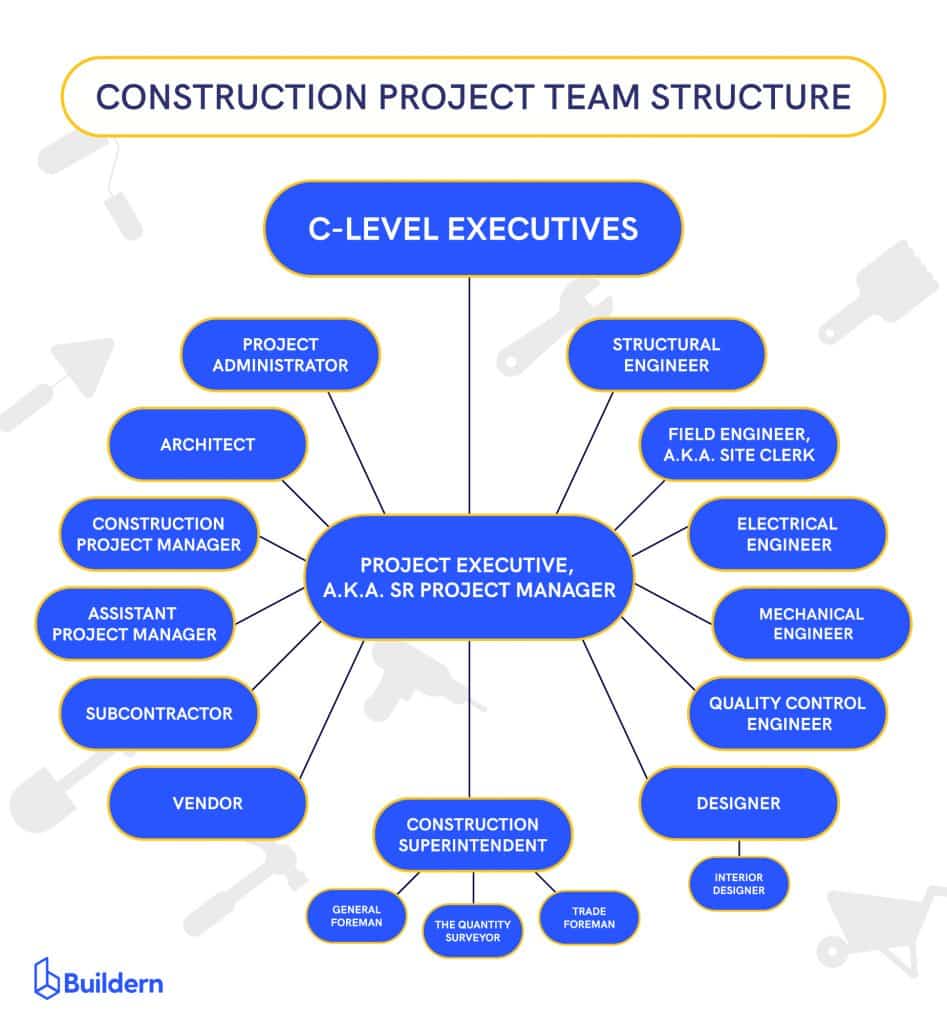
Regardless of the structure, the most successful projects share one thing in common: clear accountability and collaboration from concept to completion.
Office-Based Roles vs. Field-Based Roles in Construction
Every construction job is divided between those who plan and those who build. Office staff keep contracts, schedules, and budgets in line, while field crews handle the actual build of steel, concrete, wiring, etc.
Both sides depend on each other, so without proper coordination, even the best-designed project can lose direction.
Here’s the quick side-by-side:
| Office-Based Roles | Field-Based Roles |
|---|---|
| Project managers, estimators, schedulers | Superintendents, foremen, trades |
| Work mainly in offices or trailers | Work directly on the job site |
| Handle budgets, schedules, and compliance | Handle safety, quality, and production |
| Depend on software and reports | Depend on tools, equipment, and hands-on work |
Executive and Leadership Roles
These are the people sitting at the top of the chain. They don’t swing hammers, but every budget cut, schedule push, or design change starts here. If they miss, the whole project feels it.
Owner / Client
The owner defines the scope and financial framework for the project. They set the goals, fund the job, and sign off on the major changes. Every subsequent phase is defined by the client’s vision, influencing timelines, contract structures, and even the level of expected quality.
CEO / President (Construction Company)
This role decides where the company is heading. Which markets to chase, which projects to reject, and how aggressive the bids should be. They carry the company name, so their decisions ripple into the field. A risky job greenlit here can stress every level below.
Chief Financial Officer (CFO)
A CFO is the person who oversees the company’s financial health. Everything from simple numbers to cash flow, bonding capacity, and risk checks is managed by them. They make sure paychecks are clear and suppliers get their cut.
Chief Operating Officer (COO)
Turns the CEO’s vision into working systems by keeping projects aligned with company standards. They’re the bridge between the strategy board and the day-to-day grind. So, if the COO fails, project managers may fall into chaos quite quickly.
Project Delivery and Management Roles
People involved in delivery and management are responsible for all the operational workflows. They should be professionals at coordinating the flow of information, resources, and decisions between multiple teams and clients. Their work ensures that all objectives are consistently met, so the communication doesn’t break and the clients are satisfied.
Project Director
The director sits above individual jobs, keeping multiple projects aligned. They focus on business goals: profitability, risk, and client satisfaction across the portfolio. They don’t walk sites every day, but they know if their project is slipping because it drags the whole firm’s numbers down.
Project Manager (PM)
This is the central hub. The construction project manager plans, budgets, schedules, and talks to every stakeholder. They balance money, time, and quality, usually fighting to keep all three from breaking. If the PM loses control, subcontractors trip over each other, costs balloon, and deadlines collapse.
Assistant Project Manager
Assistants handle the grind to keep the PM sane. RFIs, submittals, logs, meeting notes, chasing signatures, and other essential documents all go through them. They’re the glue between office and site.
Scheduler / Planner
A scheduler lives inside scheduling software, building the master plan, updating progress, and running “what if” scenarios when delays hit. They create Gantt charts to make sure crews know what’s next and that changes are visible to everyone.
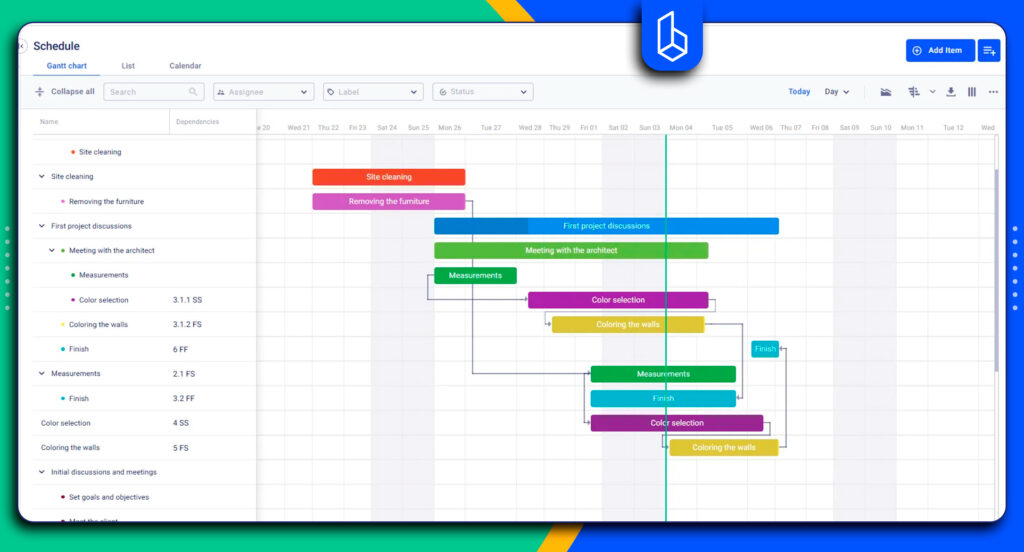
Estimator
The estimator is responsible for developing the project’s financial framework before on-site work begins (i.e., during the preconstruction phase). They collect bids, analyze material and labor costs, and prepare detailed budgets that guide decision-making throughout the project.
The accuracy of construction estimates determines the project’s financial viability and directly influences profitability. Once construction is underway, significant deviations from the initial estimates are difficult to correct, making precision at this stage essential to the company’s overall success.
Therefore, having construction estimating software to support all those calculations will ensure everything goes smoothly and as planned.
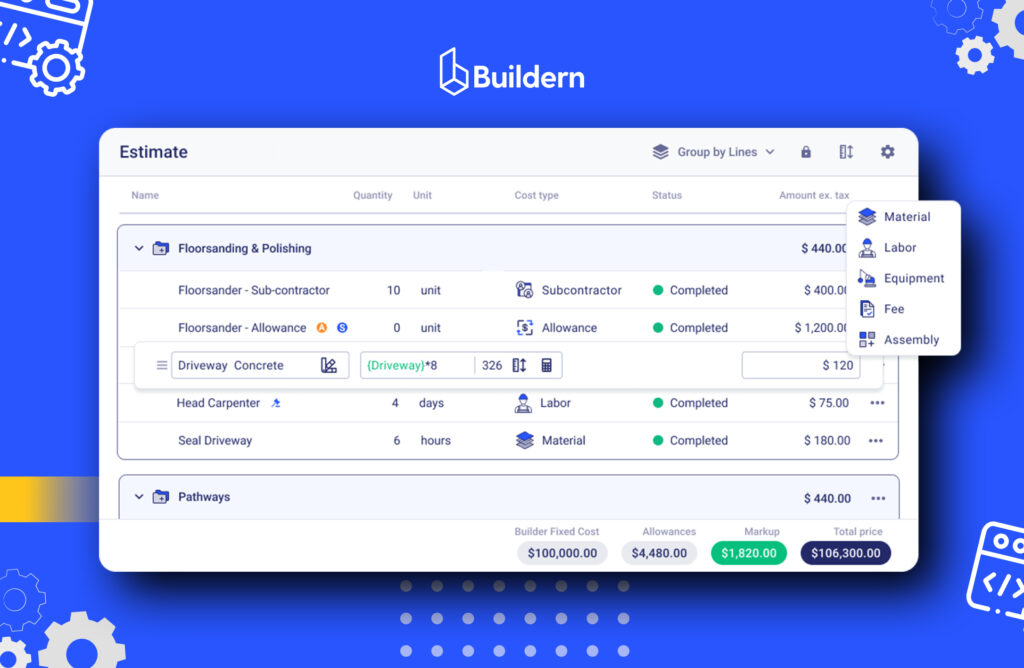
Quantity Surveyor (QS)
The quantity surveyor or cost controller oversees financial performance throughout the construction phase. Their main responsibilities suggest measuring progress, assessing the value of completed work, and providing regular cost reports. Acting as the financial safeguards, quantity surveyors also identify potential overruns and variances early.
Contract Administrator
As the name suggests, contract administrators are responsible for managing the contracts and enforcing paperwork. They handle compliance, change orders, and claims. Attention to detail is a critical soft skill for them, as an overlooked clause or missed notice can lead to costly disputes.
The contract administrators are the ones providing the structure and documentation necessary to protect the company’s interests and uphold agreements during legal or commercial issues.
Design and Technical Construction Roles
These are the people who shape how a building exists before a single nail goes in. Their drawings and calculations decide whether construction flows or grinds to a halt. When they miss details, site teams pay the price.
Architect
Sets the vision. They balance aesthetics with function and codes. A good architect translates a client’s vague idea into a plan that can actually be built. A sloppy one hands over drawings that look nice but don’t account for real-world constraints, leaving the site scrambling.

Structural Engineer
Keeps everything standing. They design the beams, foundations, and frames that carry loads. They calculate forces, materials, and tolerances. If their math is wrong or unclear
MEP Engineers (Mechanical, Electrical, Plumbing)
They handle the lifelines. HVAC, power, water, gas. Their systems weave through walls and ceilings, often fighting for the same space. Coordination is critical. Miss a clash here, and field crews end up cutting holes or redoing runs.
Civil Engineer
Looks beyond the building. They focus on earthworks, drainage, and site utilities. Their job ensures water runs off properly, roads connect, and the site isn’t left with mud pits. A poor civil plan can stall projects before vertical work even begins.
BIM Coordinator / BIM Manager
Owns the digital model. They coordinate 3D designs, run clash detection, and make sure all disciplines fit together in the virtual space before anyone builds in the field. If they do their job, costly rework drops. If they don’t, conflicts show up when it’s too late.
CAD Technician / Drafter
Produces the technical drawings everyone builds from. They turn engineer and architect sketches into precise plans. It’s detailed, repetitive work, but one typo or mislabel can ripple across the job.
Site Management Roles
These roles bridge the gap between the office plan and field execution. They translate drawings into real work, making sure crews, trades, and inspections line up without wasting time or materials.
All the job site workers need to have access to a flexible mobile application that will help them remain synced with the office updates. From updating the daily logs to communicating with other team members and accessing project files, everything becomes much easier with a dedicated digital solution at hand.
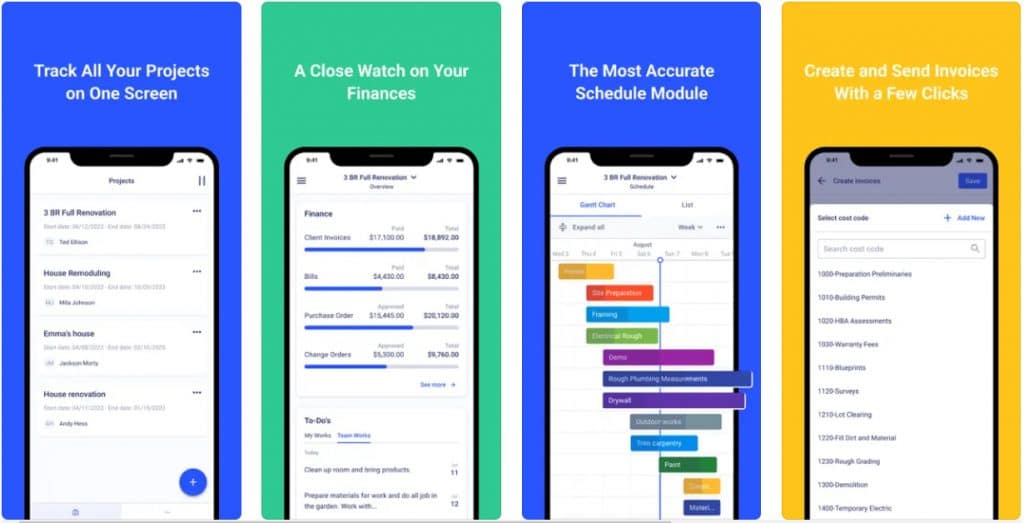
Superintendent
The superintendent is the commander on the job site. They oversee daily construction, coordinate subcontractors, enforce safety, and keep the build on schedule. When issues come up, they’re the first to call for adjustments. A good superintendent can save weeks just by staying ahead of conflicts.
Foreman
The foreman leads a specific crew or trade on the job site, overseeing task assignments, productivity, and workmanship. They know the trade well enough to spot shortcuts or mistakes before they spiral. Foremen are the reason individual crews deliver on the superintendent’s bigger plan.
Site Engineer
The site engineer handles the technical side at ground level. They set out surveys, verify that work matches design specifications, and provide technical guidance to foremen and laborers. They’re the detail checkers, making sure drawings translate properly into built work.
Safety Officer (HSE Manager)
The Safety Officer, or Health, Safety, and Environment (HSE) manager, protects people and compliance. They run safety briefings, monitor hazards, enforce personal protective equipment (PPE), and keep logs for regulators. Their oversight prevents accidents, reduces liability, and helps maintain uninterrupted operations on the site.
Quality Control (QC) Inspector
The quality control inspectors keep standards tight. They inspect materials, review workmanship, and flag anything that doesn’t meet the specifications. Their reports also protect the builder if disputes come up with clients or during the regulatory reviews.

Skilled Trade Roles (Subcontractors and Vendors)
Every project depends on the hands of skilled workers. These tradespeople shape the structure, systems, and finishes, bringing the designs to life. The accuracy of their work determines not only how a project looks but also how long it lasts.
Carpenters
They build the skeleton. Framing walls, cutting formwork, installing doors and trim, everything goes through the carpenters. They touch almost every stage of a project, affecting alignment, strength, and finish quality.
Electricians
Electricians are responsible for the building’s electrical infrastructure, including power distribution, lighting, and often low-voltage systems. Their work must meet code and line up with MEP (mechanical, electrical, and plumbing) layouts. Mistakes here aren’t just expensive, but also dangerous for everyone.
Plumbers
Plumbing ties into nearly every system. Their work connects multiple disciplines and is critical for both functionality and safety. Delays, leaks, or incorrect installations in this area can cause chain reactions affecting several other trades and lead to expensive repairs.
Masons and Bricklayers
Masons and bricklayers handle blocks, bricks, stone, and mortar. Strong walls, solid finishes, and detailed masonry work depend on their craft. Faulty work in this trade usually means cracks, moisture problems, or structural weakness with other long-term structural issues.
Welders
Steel frames, structural reinforcements, and metal fabrications all fall here. Precision in a welder’s work ensures structural stability and compliance with engineering specifications. A bad weld may not show right away, but it creates safety risks no builder can afford.
Heavy Equipment Operators
Such operators run cranes, excavators, loaders, bulldozers, and the machines that move earth and lift steel. They must balance speed with safety, because one mistake with heavy equipment can halt the entire site.
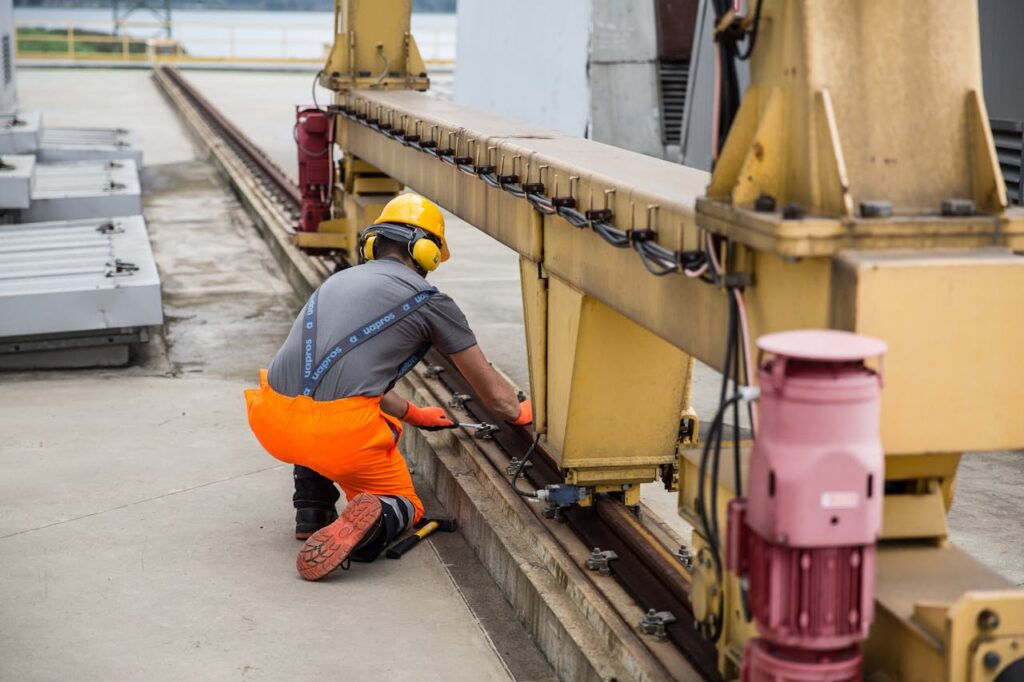
Painters
Painters provide the final visual look and impression. From primer to finishing coats, painters shape the client’s perception at handover. Quality painting elevates the overall presentation at handover, while poor execution can undermine an otherwise well-built project.
Laborers
They’re the backbone of daily site work. Moving materials, assisting trades, clearing debris, and setting up scaffolds. Laborers may not specialize, but their contribution keeps the flow steady. Without them, trades waste time doing tasks outside their scope.
Support and Administrative Construction Roles
Not every construction role happens in the field. Support and administrative workers are the people who sit behind desks, track numbers, push documents, and keep the field supplied. They don’t build walls, but if they slip, the walls don’t get built on time either.
Office Administrator / Project Coordinator
These people handle the paperwork mountain that includes reports, correspondence, schedules, meeting notes, and other documents. Effective coordination at this level keeps project information accurate and accessible, preventing miscommunication and lost details that could disrupt progress.
Procurement Officer / Buyer
The procurement workers source and secure all the necessary materials and equipment. Negotiates with suppliers, checks lead times, and makes sure orders line up with schedules. A missed order or poor negotiation here can hold back an entire crew.
Logistics Coordinator
Logistics coordinators manage equipment and deliveries. They plan storage, site access, and timing so materials arrive when needed, not weeks early or a day late. They’re the ones preventing traffic jams at the gate and wasting crane time.
IT Support (Construction Tech Specialist)
The IT specialists ensure the digital side is running properly. They manage construction project management software, mobile apps, and field devices. As technology becomes increasingly integral to construction workflows, consistent system uptime and data security are vital to maintaining productivity and coordination.
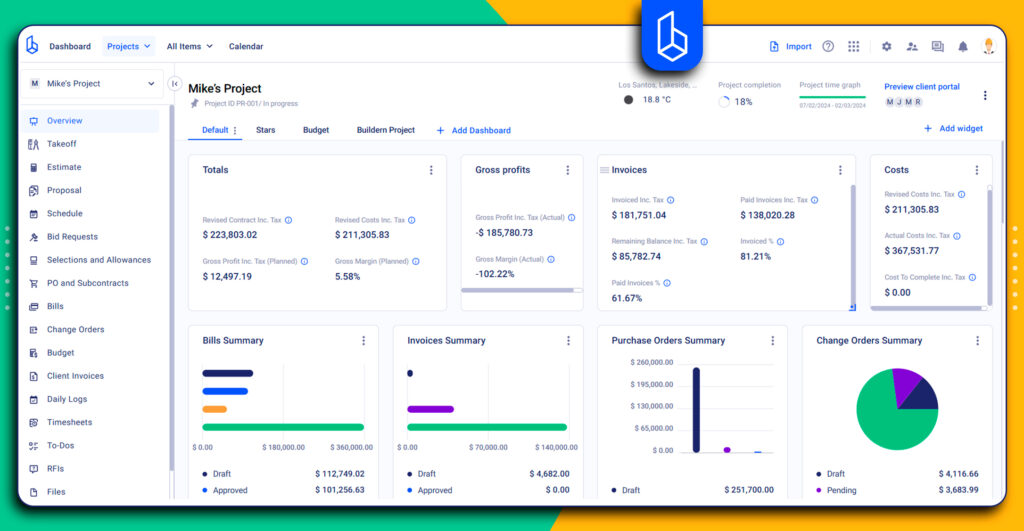
HR / Workforce Manager
Recruits crews, manages payroll, and ensures compliance with labor laws. They also handle workforce disputes. Without strong HR, turnover rises and morale drops fast.
Accounting / Finance Staff
Track expenses, process invoices, and make sure payments move smoothly. If accounting lags, suppliers hold back shipments, and subcontractors walk off-site. They’re the quiet backbone of cash flow.
Specialist and Advisory Roles
Certain issues on the site extend beyond the scope of everyday site management and require the expertise of specialized construction roles. These are people who provide technical support, ensure regulatory compliance, and protect the company from legal or environmental risks. They are actively involved in the decision-making process.
Surveyors (Land / Geomatics)
Surveyors establish and verify the physical parameters of a project site. They set boundaries, elevations, and layouts, ensuring a building sits exactly where it should. One mistake here means property disputes or a foundation poured in the wrong spot.
Environmental Consultant
This construction role is responsible for ensuring the project is in line with environmental rules. They assess factors such as soil conditions, runoff management, and air quality, providing guidance to minimize ecological impact.
Legal Advisor
A legal advisor handles the contracts and claims. By ensuring that all legal documentation and actions are sound, they protect the company’s interests and help resolve conflicts efficiently, often preventing lengthy litigation. A solid legal advisor saves months of court time and piles of money.
Insurance & Risk Manager
The insurance and risk manager focuses on coverage and liability, while assessing risks, setting up insurance policies, and stepping in when accidents or damages occur. Their work ensures one mistake doesn’t sink the entire company financially.
Minor but Critical Site Roles
Not every role makes headlines, but without these, sites grind more slowly and are less safe. They handle the gaps, the daily grind, and the overlooked tasks that keep bigger operations on track.
Apprentices
Fresh to the trade and learning under supervision, apprentices pick up skills, assist crews, and slowly build confidence. Good apprentices become tomorrow’s reliable construction workers, but only if mentored right.
Helpers / Runners
They help the on-site workers and superintendents focus on their actual work. This may suggest moving tools, fetching supplies, or running errands across the site. Without runners, skilled workers waste hours chasing small tasks instead of building.
Cleaners / Site Maintenance Crew
Site maintenance teams are in charge of keeping the work environment clean, organized, and compliant with safety regulations. Their main duties are removing debris, managing construction waste, and maintaining clear access routes across the site. If builders decide to skip this role, inspections will fail and productivity will drop significantly.
Watchman / Security Staff
Security personnel safeguard the construction site outside of working hours. They prevent theft, vandalism, and trespassing. Effective security prevents losses that can derail project schedules and budgets, maintaining both operational continuity and peace of mind for all stakeholders.
Key Takeaways
- Clear roles stop arguments about who’s supposed to do what.
- Office staff plan and track; site staff build and enforce. Both sides need each other.
- Even the “small” roles matter. Skip them, and the whole site feels the hit.
- Strong coordination keeps the budget steady and the work moving.

What Are the Main Roles in Construction?
From executives at the top to managers, engineers, site supervisors, trades, and support staff, every project needs all of the construction roles described above. The mix changes by project size, but the chain is always there.
Why Bother Defining Roles?
Defining construction roles matters because if you don’t, jobs overlap and nobody takes blame when something goes wrong. Clearly defining roles keeps work cleaner and cuts down unnecessary delays.
What’s the Difference Between Office and Field Jobs?
The answer is very simple: office workers plan, budget, and send instructions, while field crews make it real on the job site. If those two groups don’t communicate properly, mistakes pile up fast, and the project risks facing different challenges.


